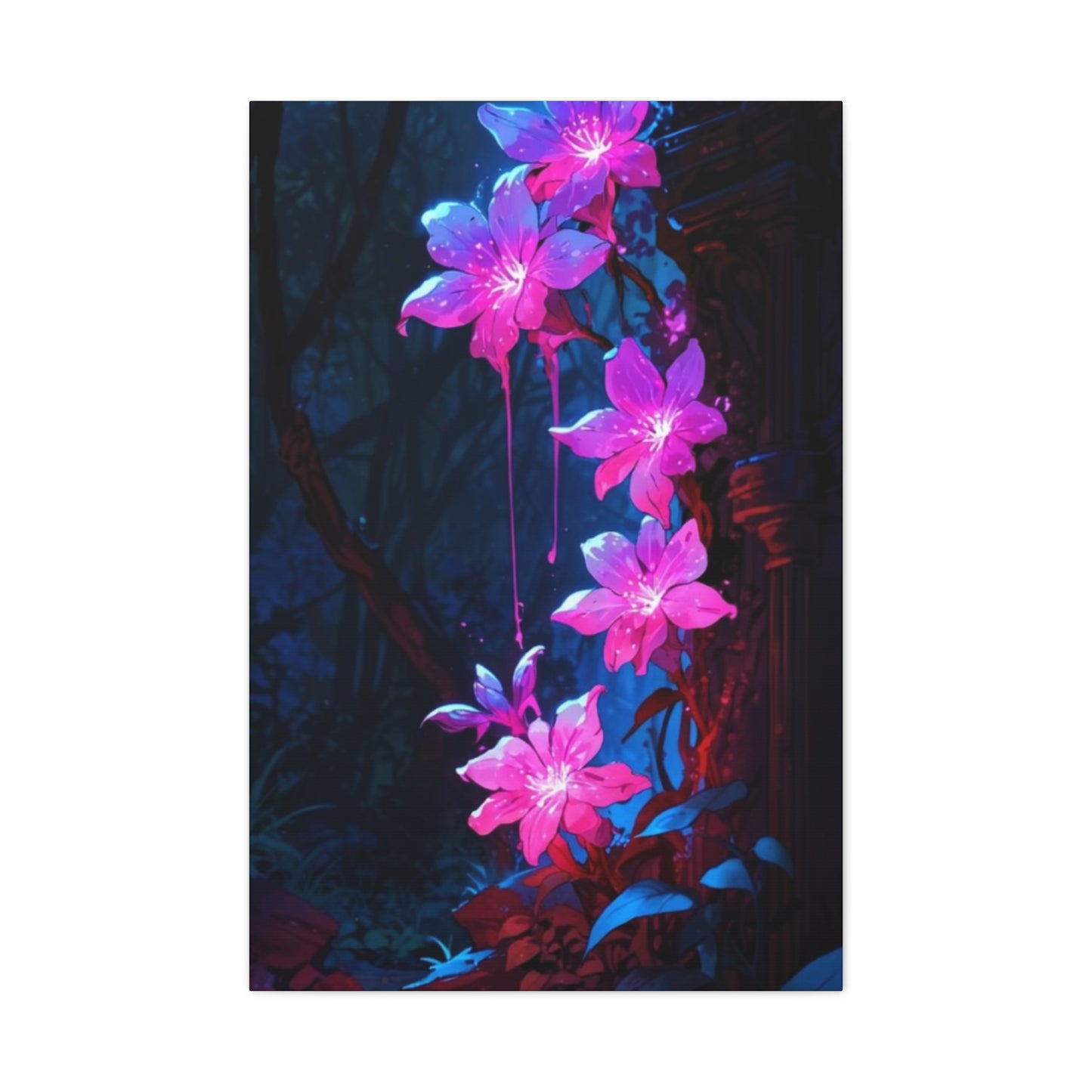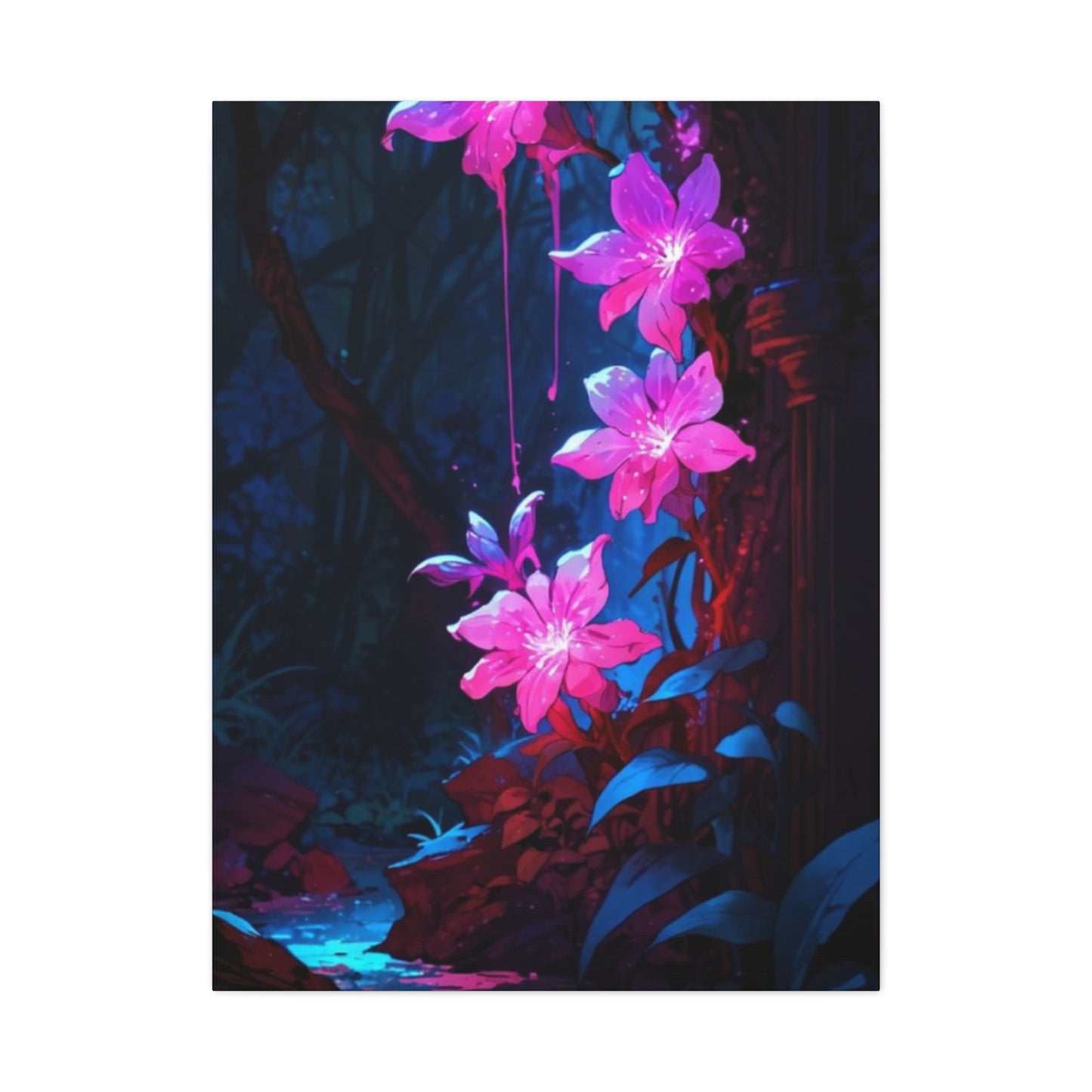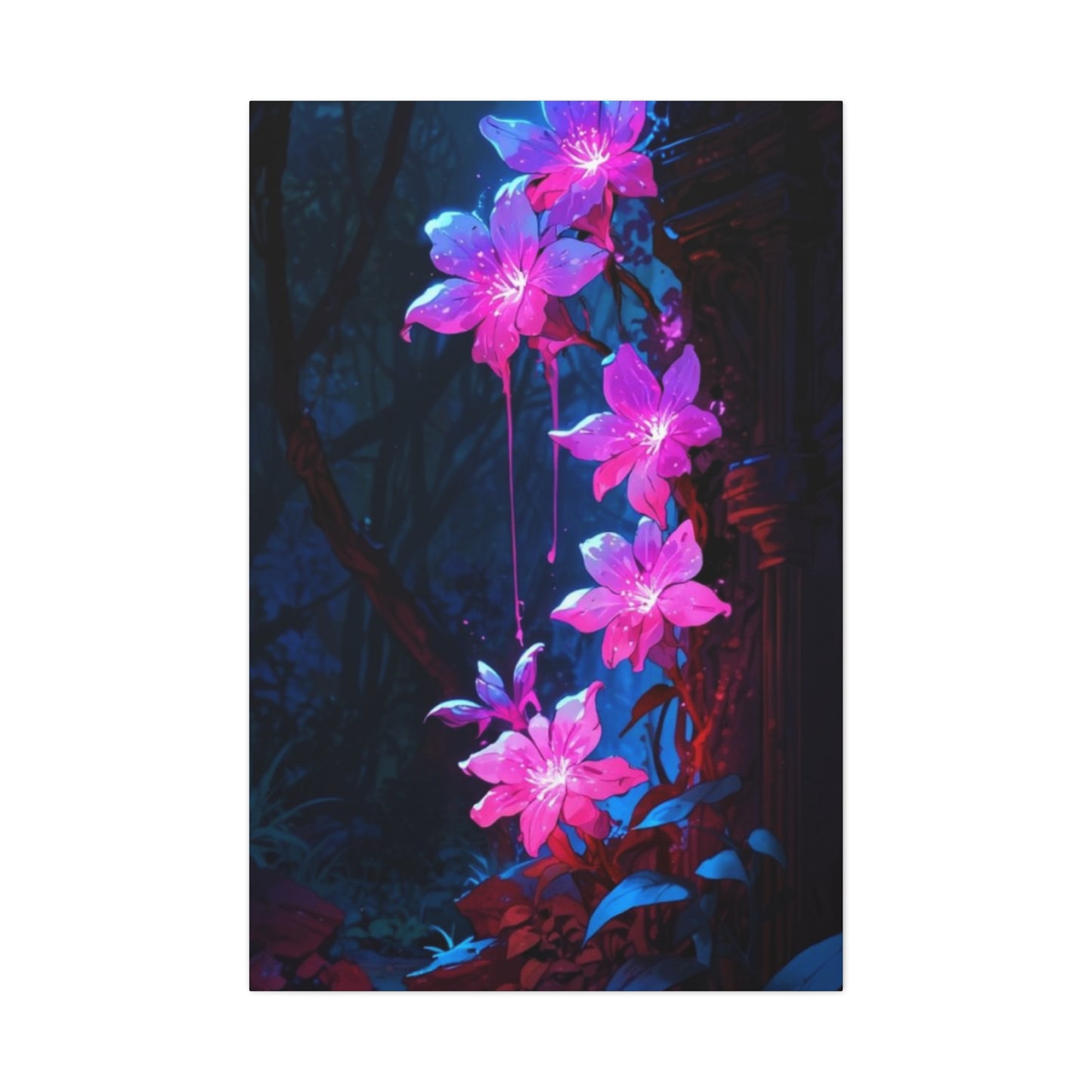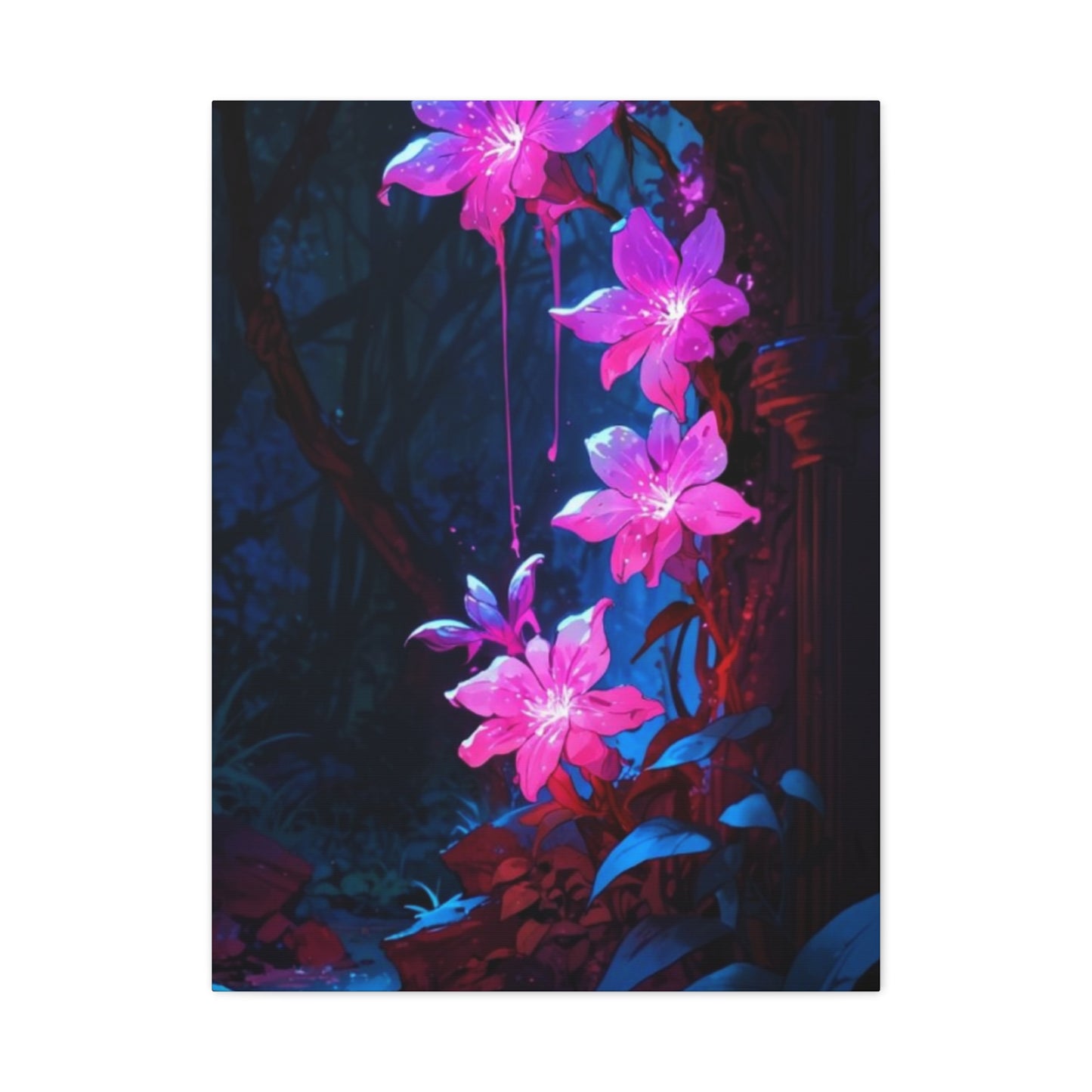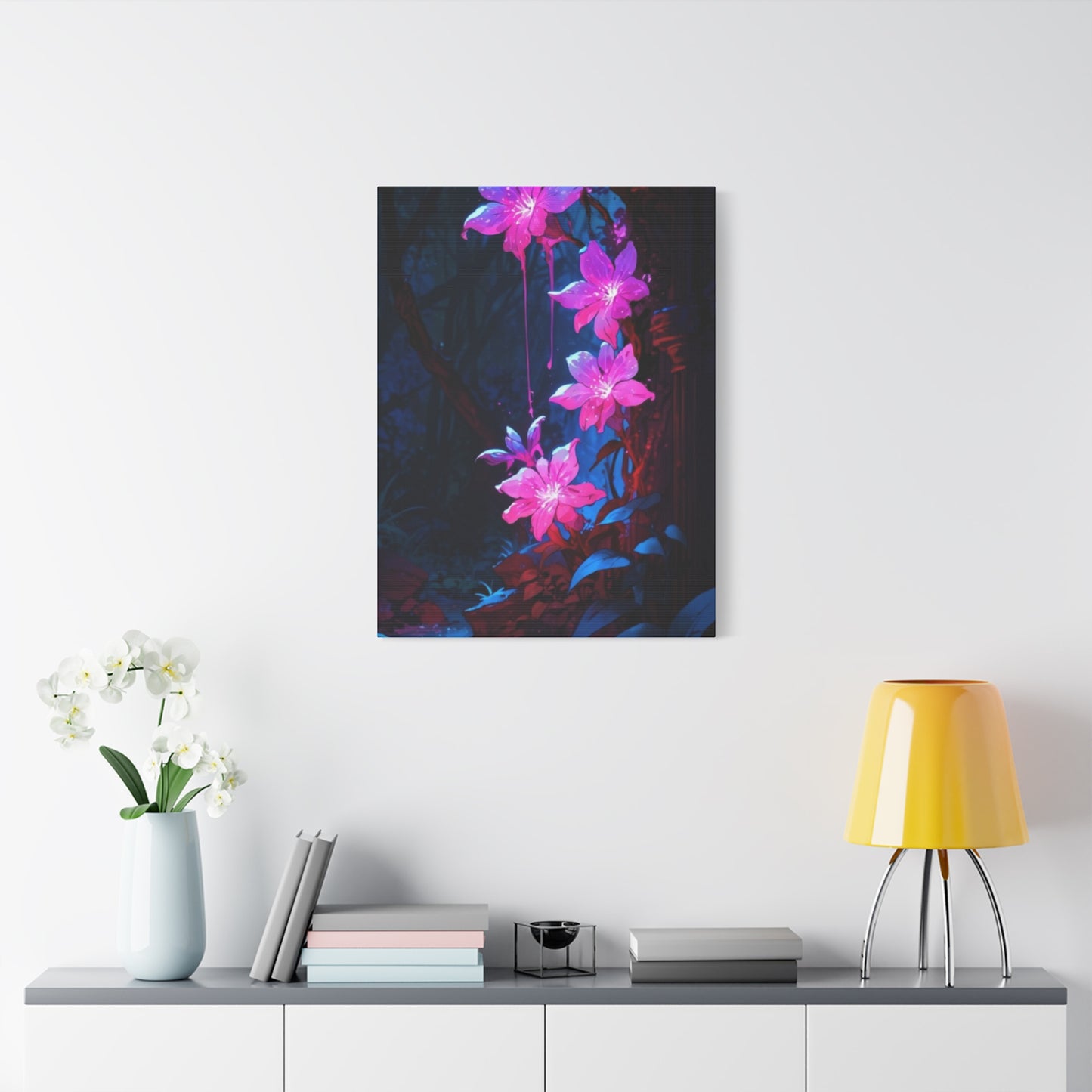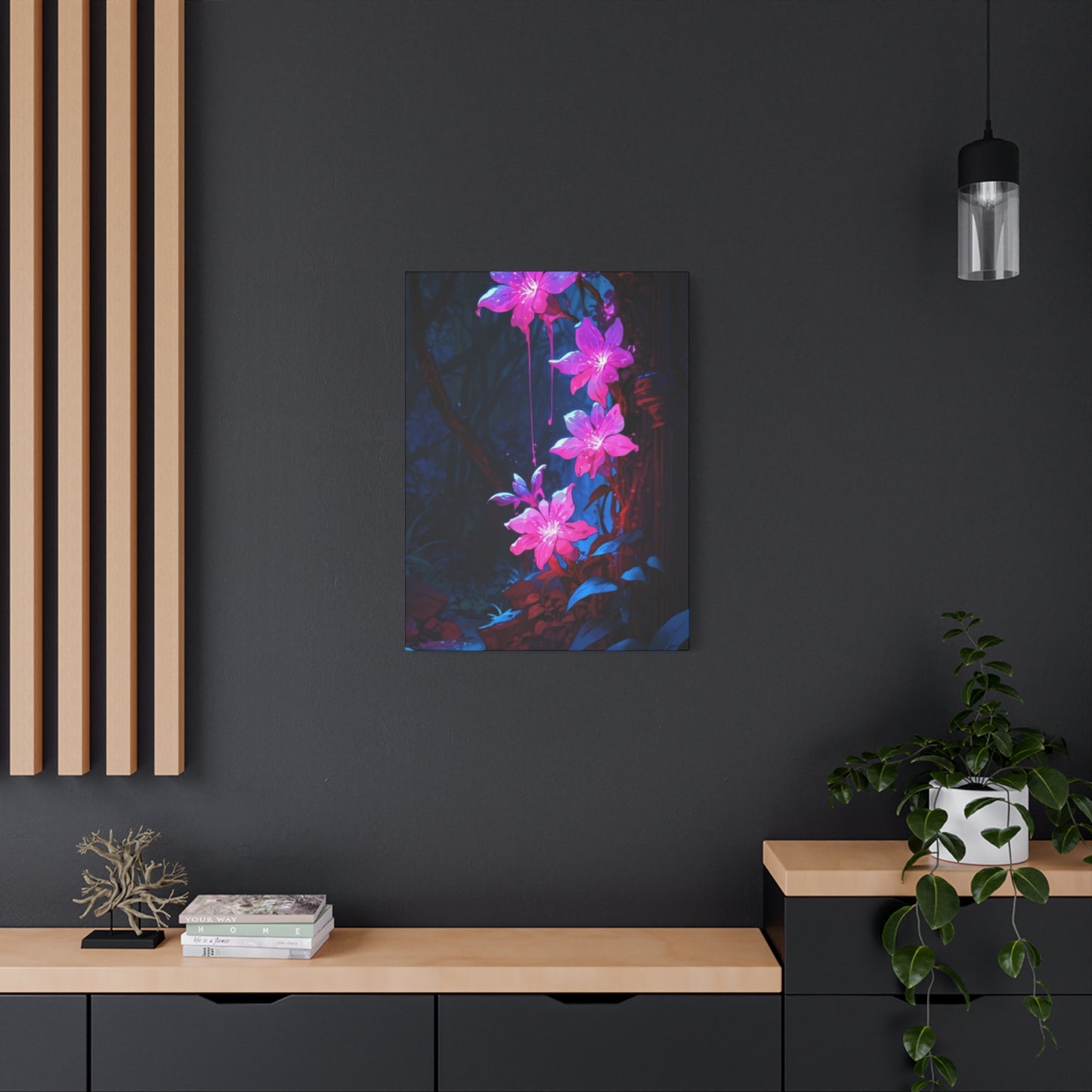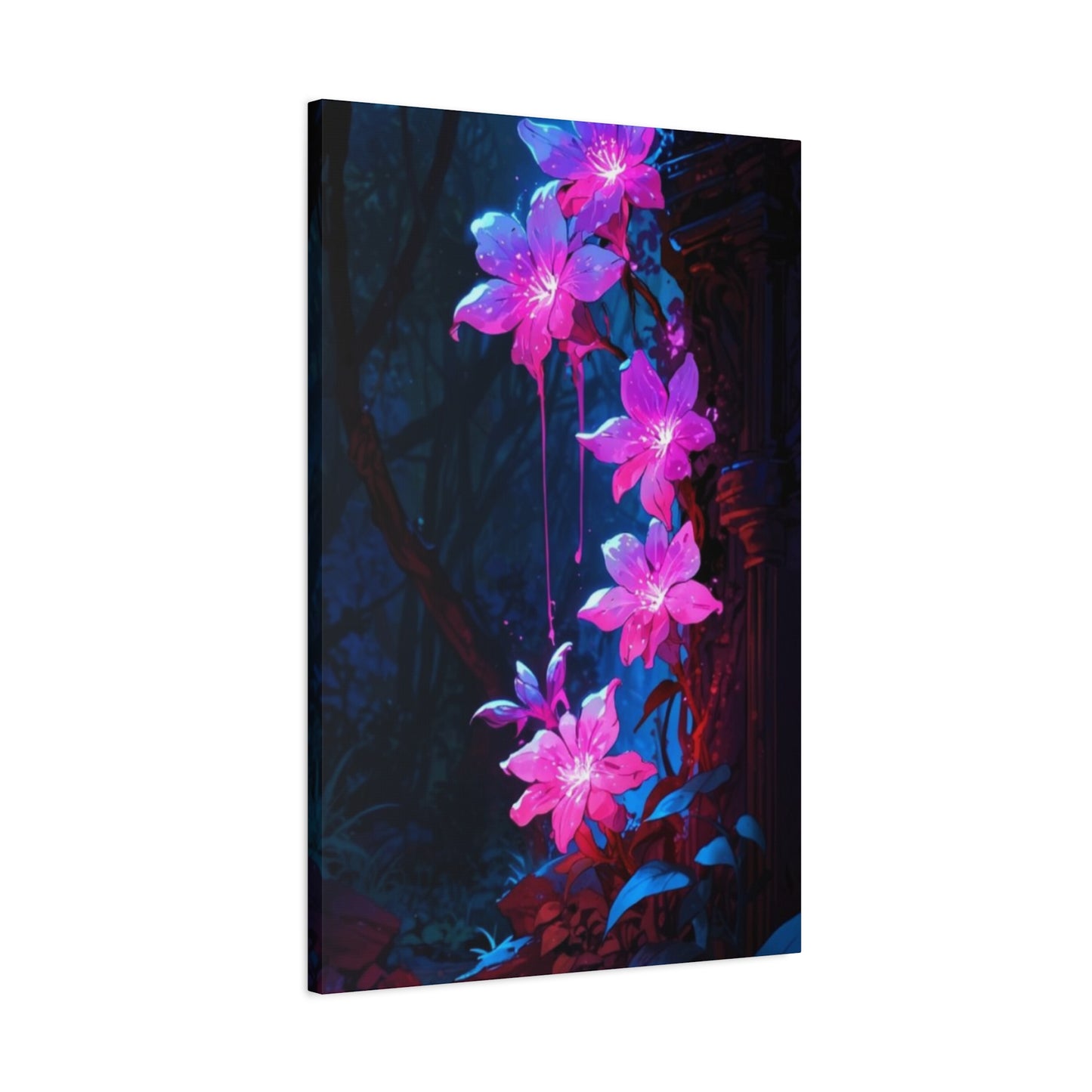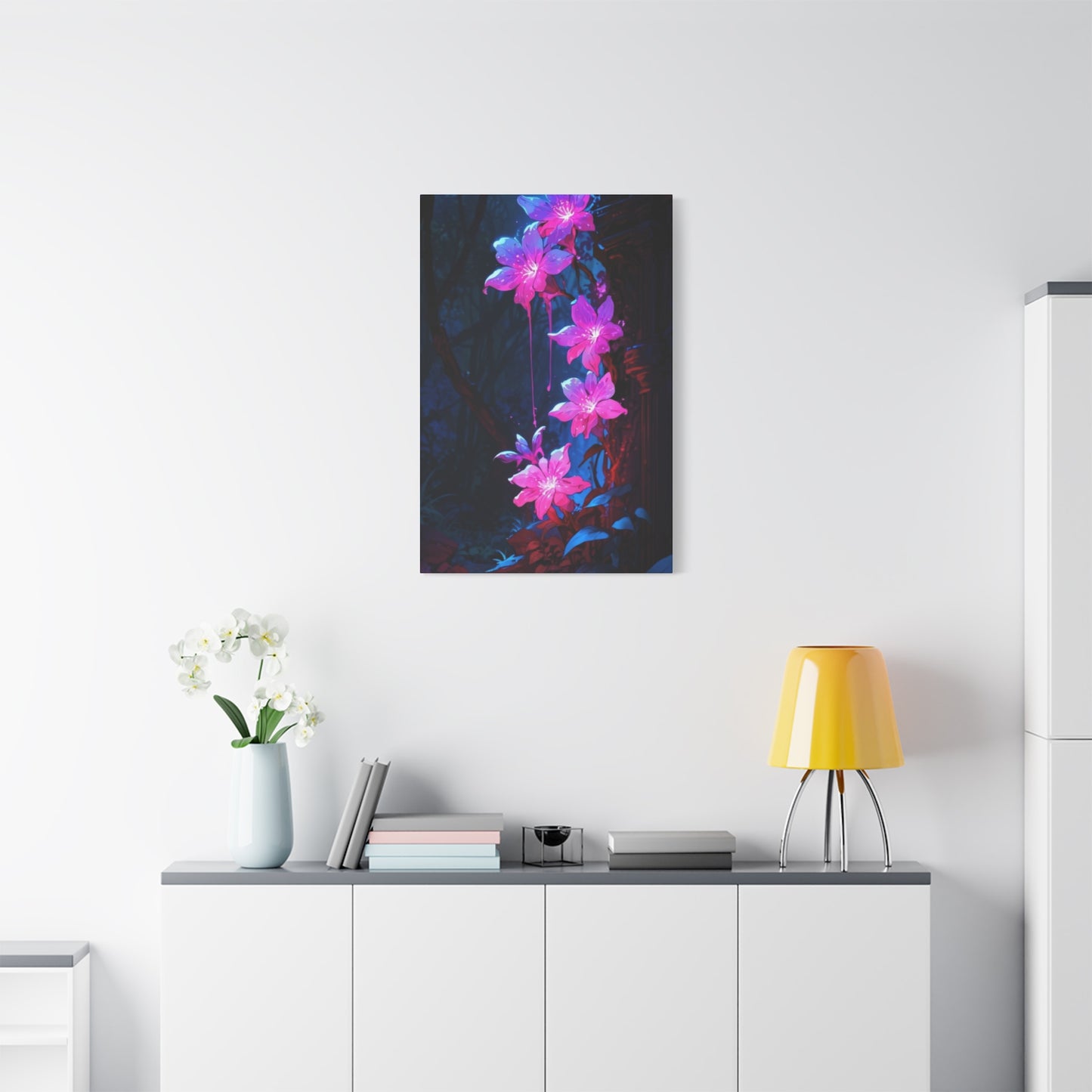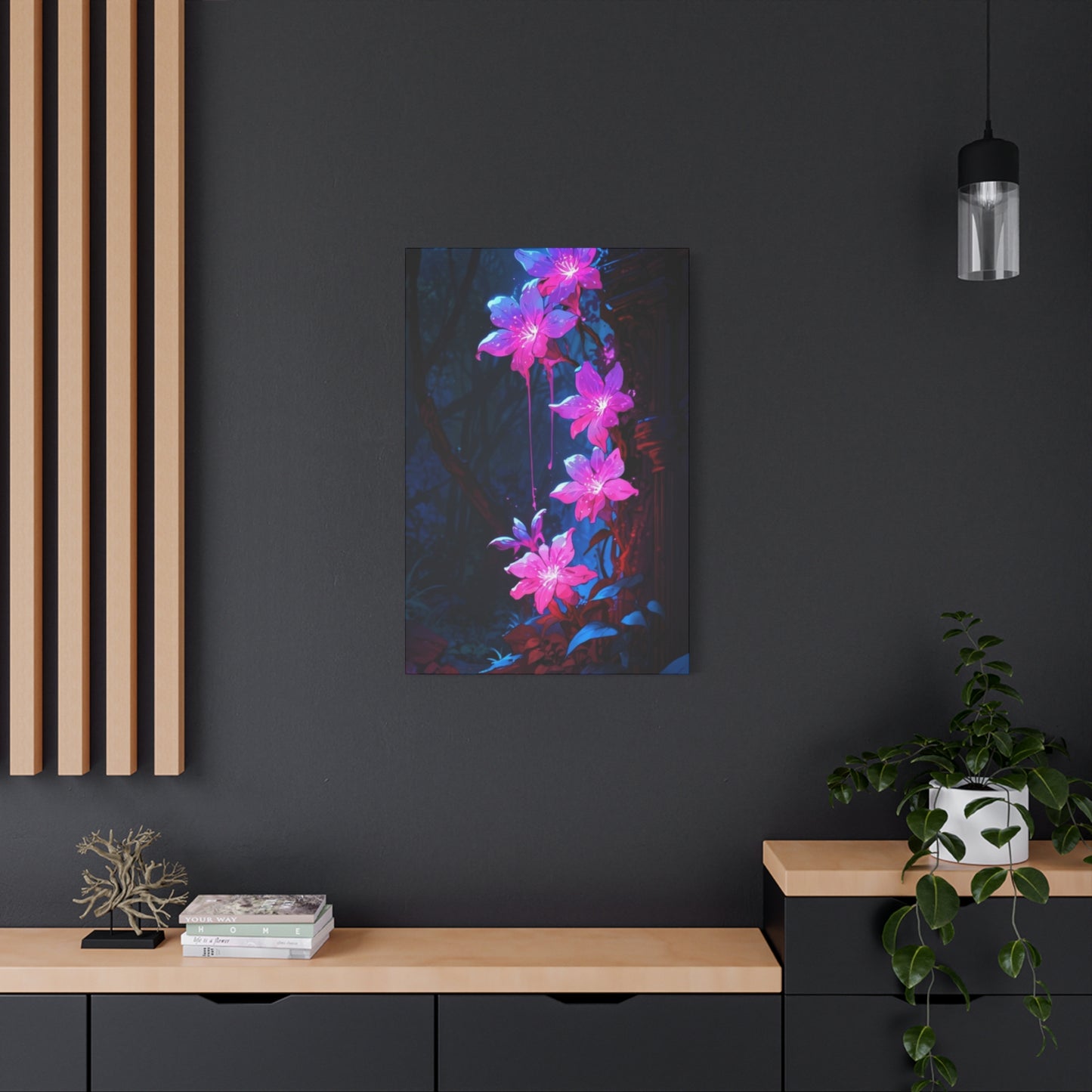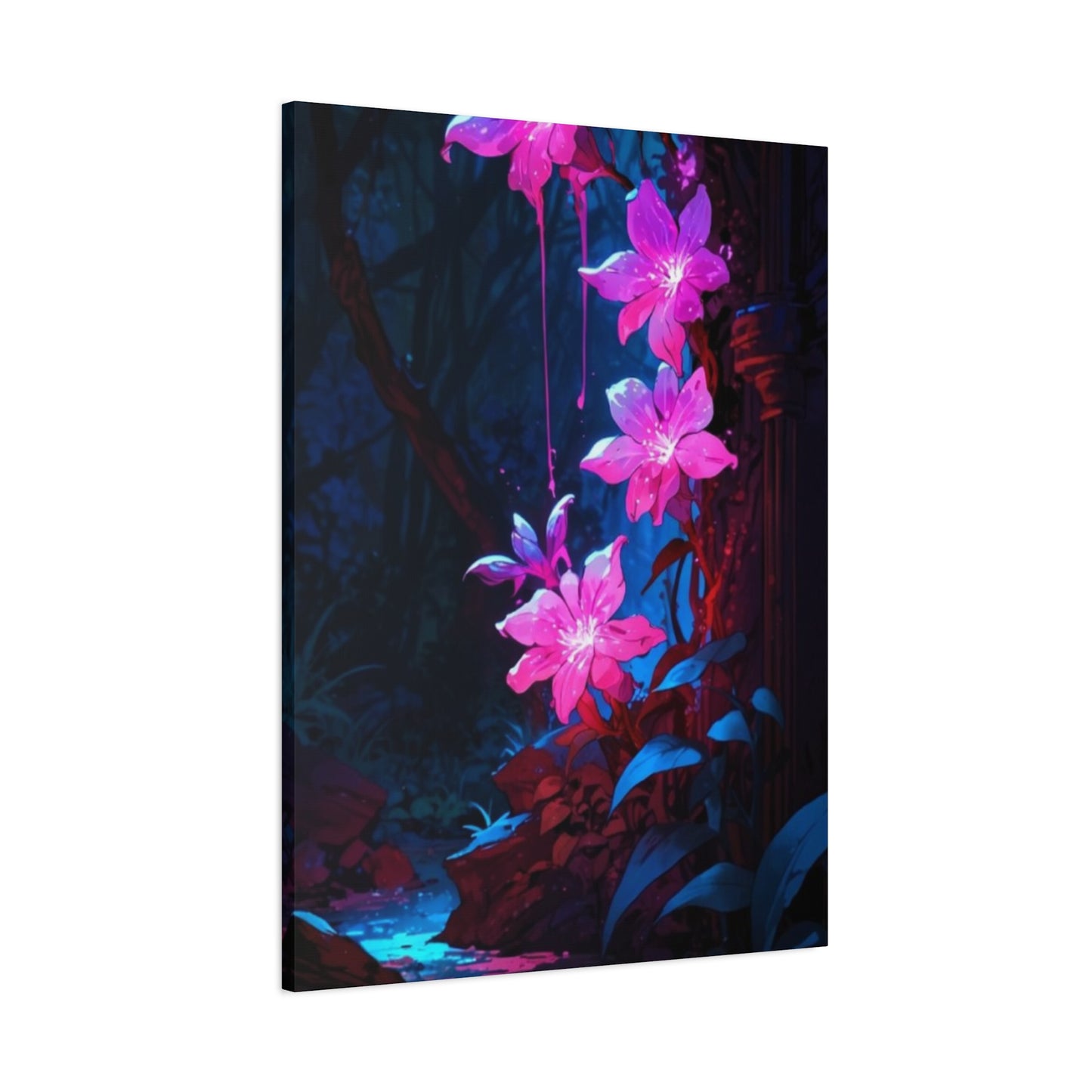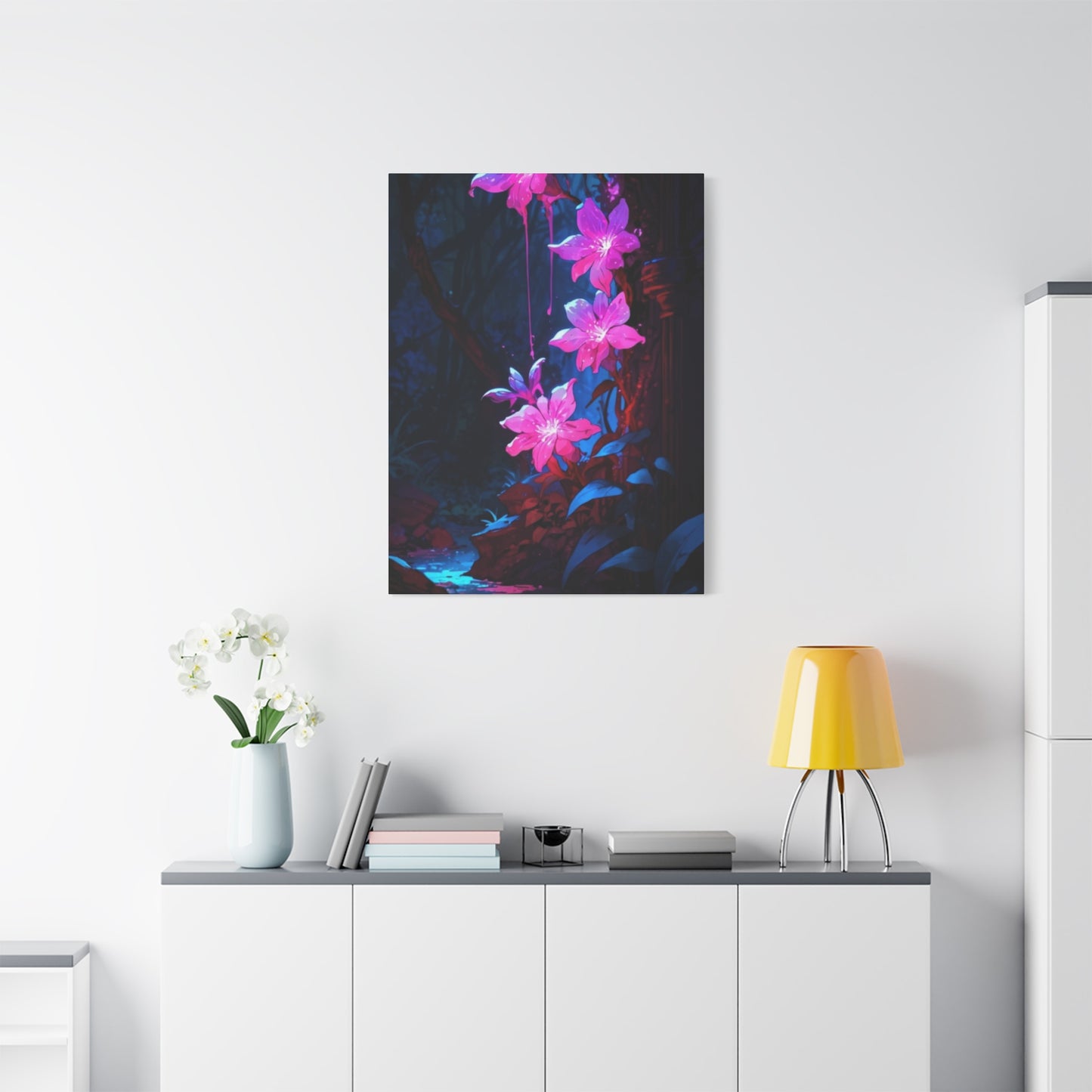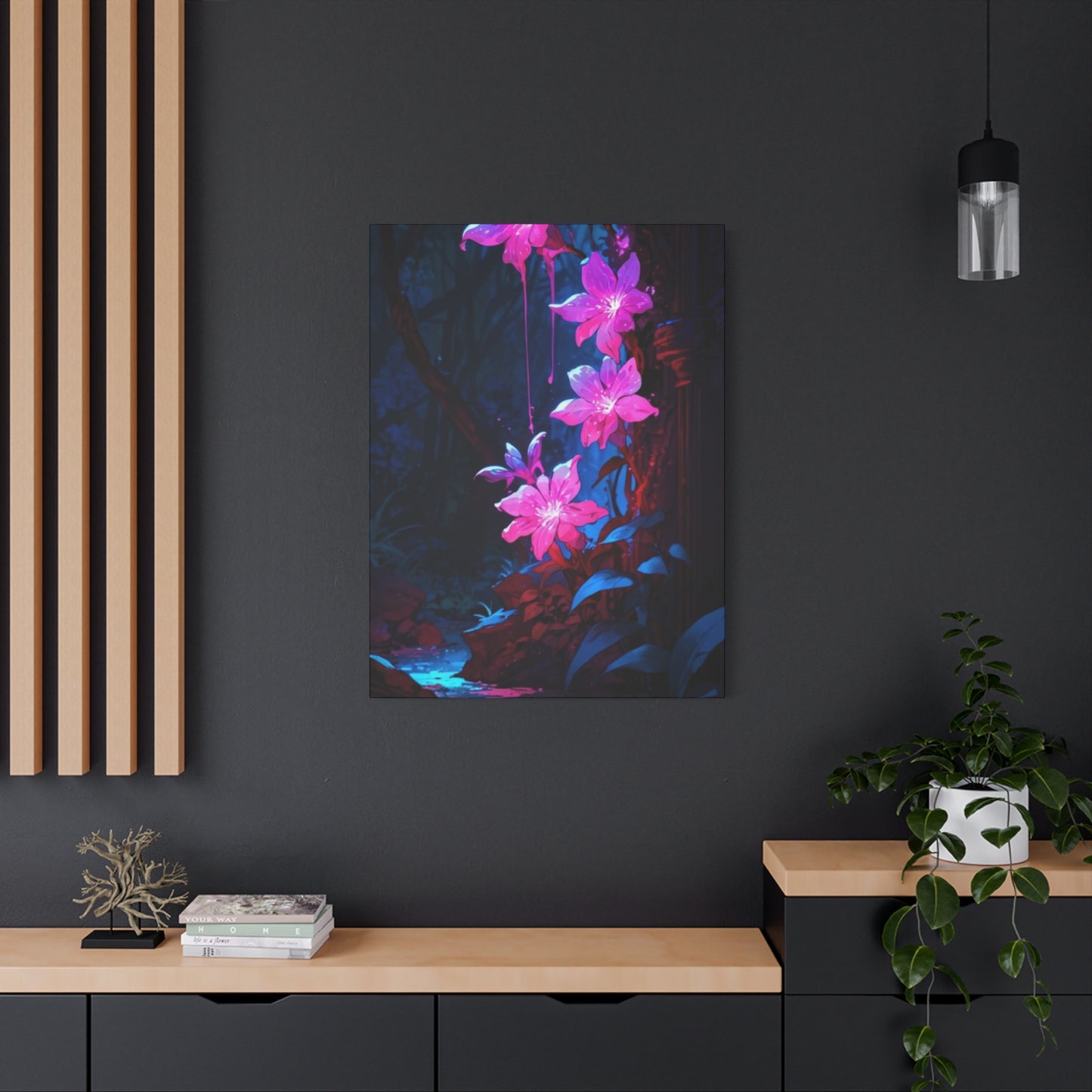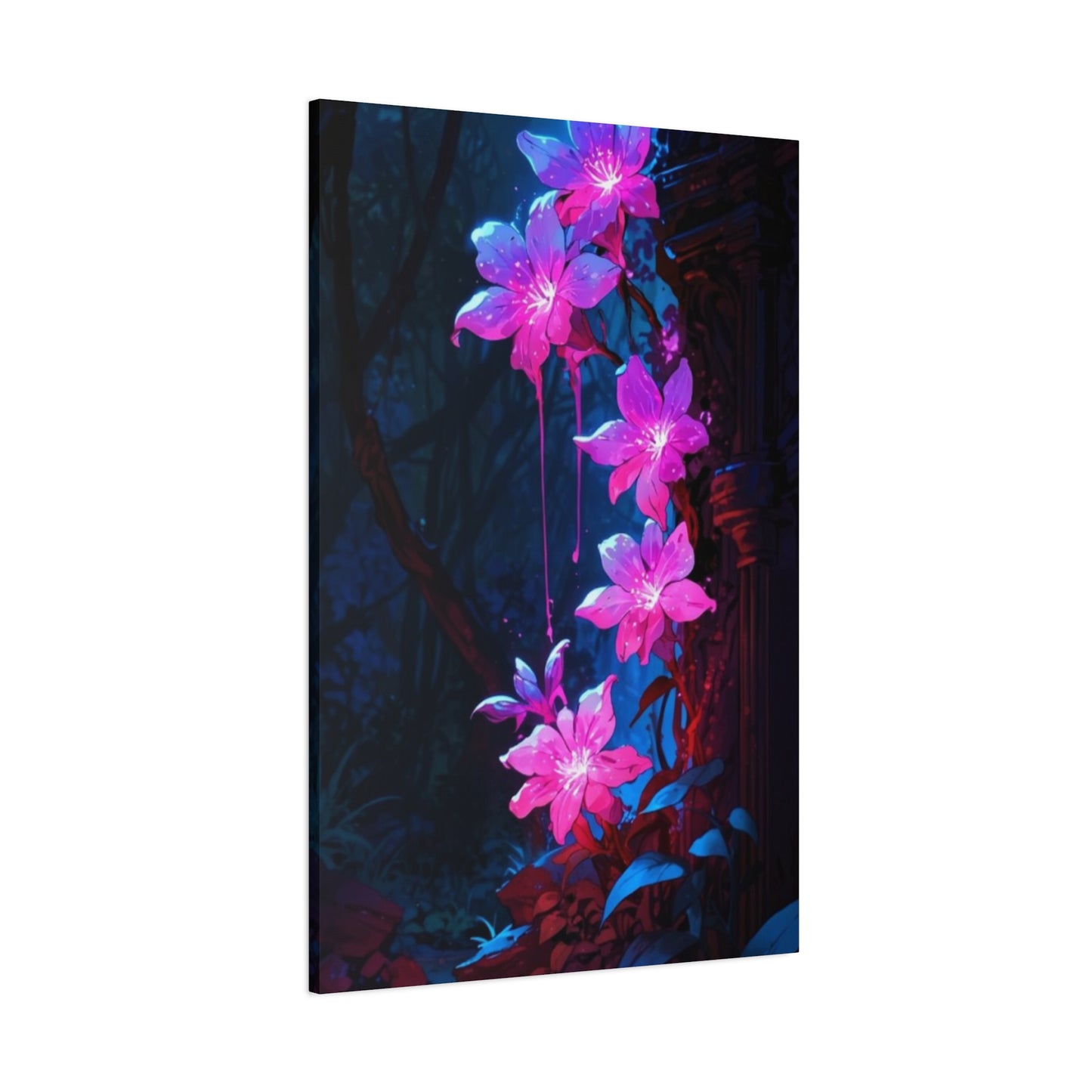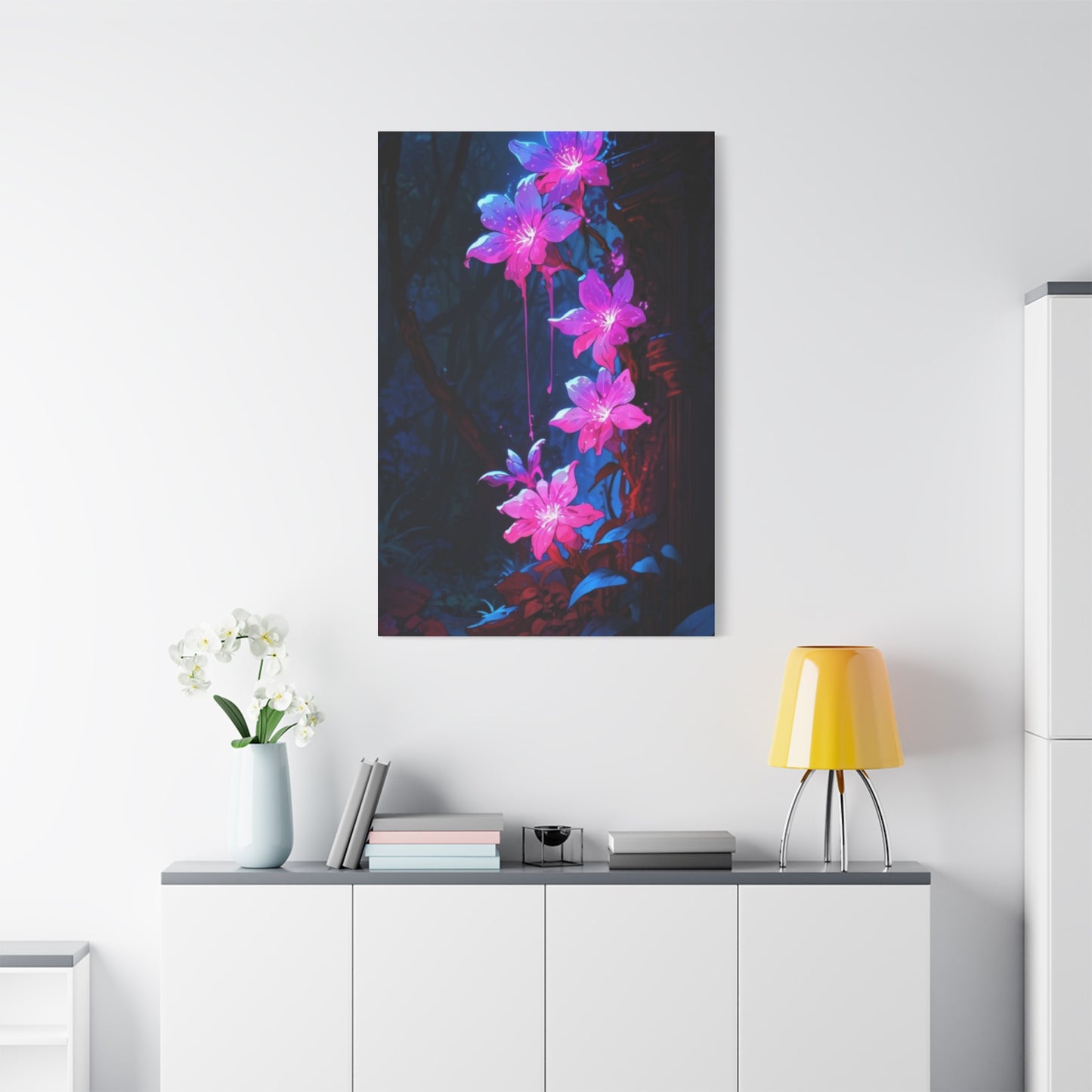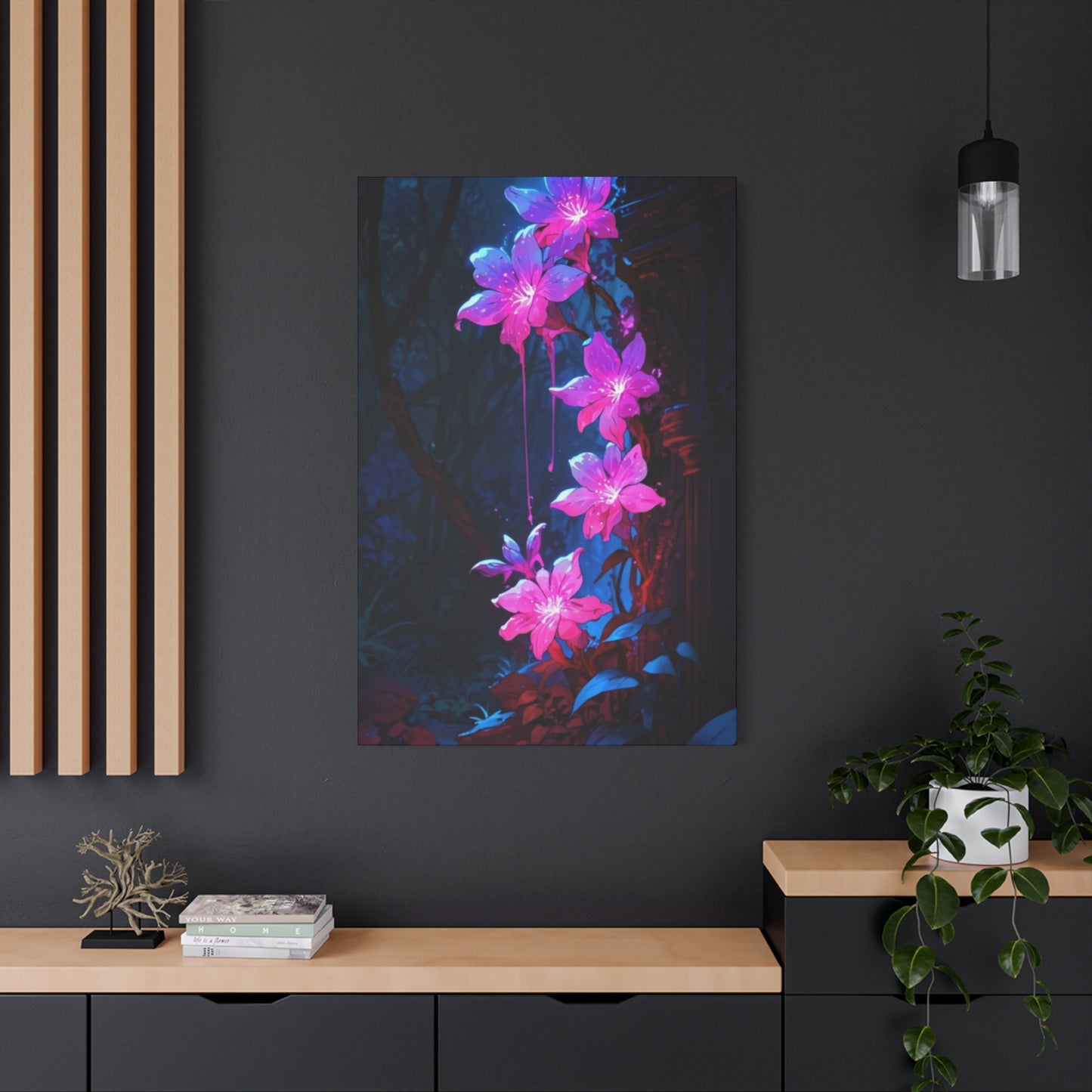Understanding the Allure of pink Glowing Flower Wall Art in Contemporary Décor ideas
The art of interior decoration has evolved dramatically over recent years, with homeowners and designers constantly seeking innovative ways to breathe life into living spaces. Among the most captivating trends emerging in contemporary home styling is the incorporation of luminous botanical artwork featuring soft rose-tinted hues. This enchanting approach to wall decoration combines the timeless beauty of natural floral imagery with modern lighting techniques, creating atmospheres that are simultaneously soothing and visually striking. The marriage of delicate petal designs with gentle radiance produces an effect that transforms ordinary rooms into extraordinary sanctuaries.
When considering options for enhancing interior walls, the choice to incorporate illuminated botanical elements offers unique advantages that traditional artwork cannot match. These pieces serve dual purposes, functioning as both decorative focal points during daylight hours and ambient light sources after sunset. The versatility of such installations makes them particularly appealing for various residential settings, from compact studio apartments to expansive family homes. Property owners discover that these artistic solutions address multiple design challenges simultaneously, providing aesthetic appeal while solving practical lighting needs.
The psychological impact of surrounding oneself with nature-inspired imagery has been extensively documented by researchers in environmental psychology. Studies consistently demonstrate that exposure to botanical representations, particularly in warm and gentle color palettes, can significantly reduce stress levels and promote feelings of tranquility. When combined with soft illumination, these effects are amplified, creating environments that support mental wellbeing and emotional balance. The human brain responds positively to the organic curves and patterns found in floral designs, triggering responses associated with relaxation and contentment.
Selecting the appropriate shade of rose for your luminous floral artwork requires careful consideration of existing color schemes and desired atmospheric effects. Lighter variations create ethereal, dreamlike qualities that work exceptionally well in spaces dedicated to rest and recuperation. Deeper, more saturated options provide dramatic impact and can serve as bold statement pieces in social areas. The spectrum available allows for precise customization to match personal preferences and architectural characteristics, ensuring seamless integration with established design elements.
The technical aspects of creating glowing botanical displays have become increasingly sophisticated, with modern manufacturing techniques enabling highly detailed representations that rival traditional painting methods. Advanced printing technologies allow for photorealistic reproduction of flower varieties, from delicate cherry blossoms to robust garden roses. When paired with specialized lighting systems, these images appear to possess an inner luminescence that captivates viewers and draws them closer for detailed examination. The depth and dimension achieved through layering techniques create three-dimensional effects that challenge perceptions of flat wall surfaces.
Installation considerations for illuminated floral artwork vary depending on the specific type of product selected. Some options require electrical connections and professional mounting, while others operate on battery power or LED strips that can be easily applied by homeowners without specialized skills. Understanding the technical requirements before purchase prevents complications during setup and ensures optimal performance. Wall material, available electrical outlets, and desired positioning all influence the installation approach and should be evaluated during the planning phase.
Pink Glowing Flowers for Your Walls
Creating stunning wall displays with luminous rose-tinted botanical artwork begins with understanding the fundamental principles of color theory and spatial arrangement. The inherent warmth of blush and coral tones provides inviting qualities that make rooms feel more welcoming and comfortable. Unlike cooler colors that can create distance, these warmer variations foster intimacy and connection, making them ideal for spaces where people gather and interact. The gentle radiance emanating from these pieces enhances their welcoming nature, casting flattering light that makes all occupants appear healthier and more vibrant.
The variety of flower species that translate beautifully into glowing wall art provides endless creative possibilities. Peony blossoms with their abundant, ruffled petals create lush, romantic presentations that work wonderfully in master bedroom settings. Orchid designs offer sleek, sophisticated alternatives for more contemporary interiors where clean lines and minimalist sensibilities prevail. Wildflower compositions bring casual charm to country-style homes, while exotic tropical blooms inject energy and personality into eclectic spaces. Each botanical variety carries its own symbolic meanings and emotional associations, allowing homeowners to select imagery that resonates with personal values and experiences.
Positioning these illuminated artworks strategically throughout a home maximizes their impact and functionality. High-traffic hallways benefit from the wayfinding assistance provided by softly glowing pieces that guide movement through dark spaces without harsh overhead lighting. Living room accent walls become conversational centerpieces when adorned with large-scale floral illuminations that set the tone for the entire area. Bathroom installations create spa-like retreats where relaxation and self-care become daily rituals rather than rushed necessities. The flexibility of these decorative elements means they adapt to virtually any room designation or purpose.
Maintenance requirements for glowing botanical wall art remain refreshingly minimal compared to living plant alternatives. No watering schedules, pruning, or pest management disrupts daily routines, yet the visual benefits of natural beauty remain constant. Occasional dusting and periodic bulb replacement represent the extent of upkeep needed to maintain pristine condition. This low-maintenance characteristic particularly appeals to busy professionals, frequent travelers, and individuals who appreciate botanical aesthetics but lack time or inclination for gardening activities. The permanence of the artwork ensures consistent visual appeal regardless of seasonal changes or environmental conditions.
The economic considerations surrounding illuminated floral wall art span a broad spectrum, accommodating various budget levels without sacrificing quality or impact. Entry-level options include printed canvas panels with adhesive LED strips that provide satisfying results at modest price points. Mid-range selections often feature hand-painted elements, superior lighting components, and enhanced durability for long-term use. Premium installations may incorporate custom designs, smart lighting integration, and professional artistic execution that creates true heirloom pieces. Understanding available options within each price category enables informed decision-making that balances financial constraints with aesthetic aspirations.
Combining multiple panels or pieces creates gallery wall arrangements that amplify visual interest and allow for personalized storytelling through curated collections. Mixing various sizes, intensities, and floral varieties produces dynamic compositions that evolve as lighting conditions change throughout the day. Symmetrical arrangements provide formal elegance appropriate for traditional interiors, while asymmetrical groupings offer contemporary flair suited to modern aesthetics. The creative freedom inherent in multi-piece installations encourages experimentation and periodic reconfiguration, preventing visual stagnation and maintaining fresh appeal over time.
The environmental benefits of choosing illuminated artwork over fresh cut flowers extend beyond water conservation to include reduced carbon footprints associated with floral transport and cultivation. Commercial flower production often involves significant pesticide use, extensive greenhouse heating, and long-distance shipping that collectively contribute to environmental degradation. Opting for permanent floral representations eliminates these recurring impacts while still enjoying botanical beauty. Energy-efficient LED technology further reduces environmental costs, consuming minimal electricity while providing thousands of hours of illumination before requiring replacement.
Illuminate Your Space with Pink Floral Art
The transformative power of strategic lighting combined with nature-inspired imagery creates interior environments that nourish both body and spirit. Scientifically formulated color temperatures in rose-tinted illumination promote circadian rhythm regulation, supporting healthy sleep patterns and waking alertness. The absence of harsh blue light commonly emitted by screens and overhead fixtures allows melatonin production to proceed naturally as evening approaches. This biological consideration makes glowing floral artwork particularly valuable in bedroom settings where sleep quality directly impacts overall health and daily functioning.
Texture plays a crucial role in how illuminated floral pieces interact with surrounding surfaces and furnishings. Canvas substrates provide traditional artistic appeal with visible weave patterns that add depth and authenticity. Acrylic panels offer sleek, modern presentations with high-gloss finishes that reflect and amplify light for increased brightness. Metal prints create industrial chic aesthetics that pair beautifully with exposed brick, concrete, and other raw architectural elements. Wood-mounted options bring organic warmth that complements natural fiber textiles and earth-tone color palettes. Selecting appropriate substrate materials ensures cohesive integration with existing design schemes.
The interplay between artificial and natural light sources affects how glowing floral artwork appears throughout daily cycles. Morning sunlight streaming through windows may temporarily diminish the perceived luminosity of these pieces, allowing their printed imagery to take precedence. As daylight fades, the internal illumination gradually becomes more prominent, shifting the artwork's character and presence within the room. This dynamic quality prevents visual monotony and ensures the pieces remain engaging regardless of time or viewing conditions. Strategic placement near windows or in naturally dim areas maximizes this transformative effect.
Scale considerations determine whether illuminated floral pieces serve as subtle accents or commanding focal points within interior spaces. Oversized installations spanning several feet create immediate drama and establish clear visual hierarchies that organize entire rooms around their presence. Medium-sized works provide balanced contributions that enhance without overwhelming, making them versatile choices for varied applications. Small accent pieces function as jewelry for walls, adding finishing touches that complete design schemes and address specific spatial needs. Mixing different scales within a single space creates visual rhythm and prevents monotonous uniformity.
Entryway Magic: Glowing Pink Flowers
First impressions carry tremendous weight in how visitors perceive homes and their occupants, making entryway design a critical consideration for aesthetically conscious homeowners. The strategic placement of luminous rose-tinted floral artwork in entrance areas immediately establishes a welcoming, sophisticated atmosphere that sets positive expectations for the rest of the home. The soft radiance greeting guests as they step through doorways creates instant warmth that counteracts the potentially stark or cold feeling of transitional spaces. This welcoming beacon serves both practical and psychological purposes, guiding safe passage while triggering positive emotional responses.
Foyer dimensions and architectural features influence the optimal size and configuration of illuminated floral installations. Compact entryways benefit from vertically oriented pieces that draw eyes upward, creating an illusion of increased ceiling height and spatial volume. Expansive entrance halls can accommodate grander installations or multi-panel arrangements that fill wall space proportionally and prevent the area from feeling cavernous or incomplete. Corner placements work particularly well in irregularly shaped foyers, utilizing otherwise challenging spaces while providing illumination from unexpected angles that adds visual interest and dimension.
The functional advantages of entrance lighting extend beyond aesthetics to address practical safety concerns. Adequate illumination prevents trips and falls when entering homes during evening hours, particularly important for elderly residents or guests unfamiliar with the layout. Keys can be located quickly, packages can be set down safely, and outdoor clothing can be removed comfortably when sufficient light eliminates fumbling in darkness. The gentle quality of floral glow provides necessary visibility without the harsh glare of overhead fixtures that can temporarily blind vision as eyes adjust from exterior darkness.
Coordinating entryway floral artwork with adjacent living spaces creates visual flow that encourages exploration and movement throughout the home. Color picking dominant tones from the entrance piece and echoing them in nearby rooms establishes cohesion and intentionality in design planning. Conversely, using the foyer as an opportunity to preview contrasting aesthetics found deeper within the home can create intriguing transitions that reward continued discovery. Either approach benefits from the presence of illuminated botanical art that serves as a reference point and conversation starter for discussing overall design philosophy.
Seasonal wreaths, door decorations, and temporary entrance accessories coordinate beautifully with permanent glowing floral installations when colors and themes are thoughtfully selected. Spring tulip arrangements echo the botanical theme while introducing fresh color variations. Autumn harvest displays create warm, layered compositions that celebrate changing seasons. Winter evergreen additions provide textural contrast against smooth, glowing petals. These seasonal rotations keep entrance areas feeling fresh and current without requiring complete redesign or significant expense, maximizing the longevity and versatility of the foundational illuminated artwork.
Mirror placement in relation to glowing floral pieces amplifies their impact through reflection and light multiplication. Positioning mirrors directly opposite or adjacent to illuminated artwork effectively doubles the visual presence while increasing overall brightness in the space. This strategic arrangement proves particularly valuable in narrow or dark entryways where spatial and lighting challenges often coexist. The reflected imagery creates depth and complexity that makes small areas feel more substantial and thoughtfully designed. The interplay between original and reflected light sources adds dynamic visual interest that static decorations cannot achieve.
Transform Rooms with Pink Glow Wall Art
Comprehensive room transformations often seem daunting due to anticipated costs, time commitments, and disruption to daily life. However, the introduction of strategically selected glowing floral artwork can accomplish dramatic aesthetic shifts without extensive renovation or investment. A single statement piece positioned on a previously bare wall instantly alters spatial perception, color dynamics, and atmospheric mood. The addition of soft illumination changes how all other elements in the room are perceived, often revealing hidden beauty in furnishings and architectural details that went previously unnoticed.
Color harmony principles guide the selection of rose-tinted floral artwork that complements rather than clashes with existing paint colors and upholstery choices. Monochromatic schemes incorporating various shades within the same color family create sophisticated, cohesive appearances that feel professionally designed. Analogous color combinations using adjacent hues on the color wheel produce harmonious blends that remain visually interesting without jarring contrasts. Complementary pairings that juxtapose opposite colors create vibrant energy and dynamic tension appropriate for active spaces like home offices or exercise rooms. Understanding these relationships ensures successful integration regardless of current color schemes.
Room functionality influences the appropriate intensity and color temperature of illuminated floral installations. Bedroom environments require softer, warmer glows that support relaxation and sleep preparation, while home offices benefit from brighter, cooler illuminations that enhance alertness and productivity. Living rooms often need adjustable options that adapt to various activities, from quiet reading to lively entertaining. Dining areas achieve optimal ambiance with medium-intensity warm lighting that flatters skin tones and makes food appear more appetizing. Matching technical specifications to intended uses ensures satisfaction and prevents the need for returns or exchanges.
The perceived size of rooms can be manipulated through strategic placement of glowing floral artwork. Positioning luminous pieces on shorter walls draws attention across space, making narrow rooms feel wider. Vertical arrangements emphasize ceiling height, particularly valuable in rooms with low ceilings where every inch matters. Creating focal points on far walls pulls eyes through space, making shallow rooms appear deeper. These optical illusions cost nothing beyond thoughtful positioning yet deliver measurable improvements in how spaces feel and function. The illuminated quality of the artwork enhances these effects by creating visual depth that flat decorations cannot match.
Furniture arrangement responds to the presence of illuminated artwork, often requiring adjustment to maximize viewing angles and maintain balanced composition. Seating should be positioned to allow comfortable appreciation of glowing pieces without neck strain or awkward body positioning. Coffee tables and side tables need placement that prevents obstruction of sightlines to featured artwork. Area rugs should be sized and positioned to anchor furniture groupings in relation to wall art, creating cohesive zones within larger rooms. These considerations ensure that all design elements work together harmoniously rather than competing for attention or creating visual confusion.
Lighting layering principles dictate that successful room design incorporates multiple light sources at various levels and intensities. Glowing floral artwork contributes ambient lighting that fills space with general illumination. Task lighting addresses specific activities like reading or cooking, while accent lighting highlights architectural features or decorative objects. The combination of these layers creates flexible environments that adapt to changing needs and activities throughout the day. Dimmer switches and multiple circuits allow fine-tuning that optimizes comfort and functionality regardless of circumstances or preferences.
Architectural flaws and imperfections become less noticeable when attention is redirected toward beautiful, glowing focal points. Awkward column placements, off-center windows, or slightly crooked walls fade into the background when dramatic floral illuminations command primary attention. This strategic distraction technique allows homeowners to live comfortably in less-than-perfect spaces without undertaking expensive structural modifications. The positive emotional response generated by beautiful artwork outweighs minor annoyances, shifting overall perception from dissatisfaction to contentment. This psychological benefit alone justifies investment in quality illuminated pieces.
Technology integration within modern homes extends to illuminated artwork through smart plugs, timers, and automation systems. Programming artwork to illuminate automatically at sunset eliminates the need for manual operation while ensuring consistent ambiance. Integration with home security systems can make artwork turn on when motion is detected, deterring intruders while providing safe passage for residents. Vacation modes that randomly vary illumination patterns create the appearance of occupancy, protecting empty homes from opportunistic criminals. These practical applications demonstrate that decorative pieces can serve multiple purposes beyond pure aesthetics.
Modern Pink Flower Wall Illumination
Contemporary interior design emphasizes clean lines, uncluttered spaces, and purposeful selection of decorative elements that earn their place through both beauty and function. Illuminated floral artwork fits seamlessly within this philosophy, offering minimalist visual appeal while serving practical lighting needs. The streamlined presentation of modern botanical prints eliminates unnecessary ornamentation, focusing attention on essential forms and colors that define each flower variety. This reductive approach creates powerful impact through simplicity rather than complexity, aligning perfectly with current aesthetic preferences.
Material innovation drives the evolution of modern illuminated floral art, with new substrate options and lighting technologies constantly emerging. Edge-lit acrylic panels create ethereal floating effects where flowers appear suspended in glowing fields of color. Laser-cut metal screens cast intricate shadow patterns that interact with direct illumination to produce layered visual experiences. Fabric-based installations incorporate fiber optics that create twinkling, starlike effects within petal arrangements. These technical advances expand creative possibilities while maintaining the clean aesthetics demanded by modern design sensibilities.
Geometric interpretation of organic floral forms bridges the gap between natural inspiration and contemporary abstraction. Stylized representations that emphasize angular petal arrangements, symmetric compositions, and mathematical precision appeal to admirers of both botanical beauty and modern art. The fusion of these seemingly disparate elements creates unique pieces that function equally well in traditional or contemporary settings. The versatility of geometric florals makes them particularly valuable for transitional spaces or homes that blend multiple design eras and influences.
Ambient Decor: Glowing Pink Florals
The concept of ambient illumination refers to background lighting that fills space without drawing specific attention to itself or its source. Glowing floral artwork excels in this role, providing sufficient light for safe navigation and general visibility while maintaining soft, diffused quality that avoids harsh shadows or glare. The dual nature of these pieces as both light sources and decorative objects creates unique value propositions that standard lamps or fixtures cannot match. The integration of form and function represents peak design efficiency where single elements accomplish multiple objectives simultaneously.
Atmospheric mood creation through lighting has been understood and exploited by designers, architects, and entertainment professionals for generations. The specific psychological effects of warm, rose-tinted illumination include increased feelings of intimacy, reduced aggression, enhanced appetite, and improved social bonding. These responses occur automatically at subconscious levels, influencing behavior and emotion without conscious awareness. Strategic deployment of glowing floral artwork in social spaces like dining rooms and conversation areas leverages these effects to create environments that naturally facilitate positive interactions and memorable experiences.
Energy efficiency considerations make LED-based illuminated floral artwork environmentally and economically responsible choices for conscious consumers. Modern LED technology consumes minimal electricity while producing impressive brightness levels that older incandescent or fluorescent options could not achieve without significant energy expenditure. The extended lifespan of LED components means years of reliable operation without replacement costs or maintenance headaches. When calculated over the lifetime of the installation, the cost per hour of operation becomes negligible, making these pieces practical as well as beautiful additions to home environments.
Sound design often accompanies serious interior design efforts, yet remains overlooked in many residential projects. While glowing floral artwork does not directly address acoustics, the softened atmosphere it creates often leads residents to lower conversation volumes naturally, reduce television and music levels, and generally create quieter, more peaceful home environments. This indirect acoustic benefit compounds the stress-reduction effects of visual beauty and gentle lighting, producing holistic improvements in overall quality of life. The cumulative impact of multiple small environmental improvements often exceeds the sum of individual contributions.
Aromatic considerations pair beautifully with visual floral presentations to create multi-sensory experiences that engage multiple perception channels simultaneously. Complementary scented candles, essential oil diffusers, or fresh flowers that match the species depicted in glowing artwork create reinforcing sensory loops that deepen immersion and emotional impact. The human brain processes multi-sensory information more completely and memorably than single-channel stimulation, making these combined approaches particularly effective for creating lasting impressions and strong positive associations with spaces.
Personal wellness practices benefit from dedicated spaces designed specifically to support meditation, yoga, journaling, or other introspective activities. Glowing floral artwork contributes significantly to these sanctuaries by providing gentle illumination that supports relaxation without distraction. The natural imagery helps focus wandering minds by offering beautiful but undemanding visual anchors that facilitate mental stillness. The consistent, unwavering quality of illumination eliminates the variability of natural light or flickering candles that can disrupt concentration. These spaces become reliable refuges where restorative practices can be pursued with maximum effectiveness.
Pink Glow Canvas Ideas
Canvas substrates offer particular advantages for illuminated floral artwork through their textural interest, traditional artistic associations, and ability to diffuse light in soft, appealing ways. The woven fabric surface creates visible texture that adds depth and authenticity compared to smooth print surfaces. Gallery-wrap stretching techniques eliminate visible frame edges, creating clean contemporary presentations that float gracefully on walls. The slight flexibility of canvas makes it more forgiving during shipping and handling compared to rigid materials, reducing damage risk and returns. These practical advantages combine with aesthetic benefits to make canvas popular for both artists and consumers.
Botanical illustration styles range from photorealistic precision to loose impressionistic interpretation, each creating distinctly different atmospheric effects when illuminated. Hyper-detailed representations showcase the intricate complexity of individual petals, stamens, and pistils, rewarding close examination while providing visual interest from distance. Watercolor effects create dreamy, romantic qualities that soften spaces and introduce painterly qualities associated with fine art. Bold graphic silhouettes deliver modern impact and read clearly across rooms, making them ideal for large open-plan spaces where subtlety would be lost. Matching illustration style to space characteristics and personal preferences ensures satisfying long-term enjoyment.
Triptych and diptych formats divide single images across multiple canvases, creating dynamic installations that command attention and fill wall space impressively. The negative space between panels adds visual breathing room while allowing wall color to participate in the overall composition. Viewers' eyes naturally track across panels, creating a sense of movement and narrative progression even in static imagery. The flexibility to adjust spacing between sections allows fine-tuning during installation to achieve perfectly balanced results. These multi-panel formats particularly suit wide walls above sofas, beds, or console tables where vertical pieces would appear awkwardly proportioned.
Mixed media approaches combine printed imagery with hand-painted embellishments, applied textures, or dimensional elements that create unique one-of-a-kind pieces. These hybrid creations offer the detail and consistency of printed bases with the authentic artistic touches that increase perceived value and uniqueness. Three-dimensional petals that extend beyond the canvas surface create shadow play that interacts with illumination for enhanced depth. Metallic paint accents catch and reflect light in ways that flat printing cannot replicate, adding sparkle and luxury to finished pieces. These artistic upgrades justify premium pricing while delivering truly distinctive artwork that cannot be exactly duplicated.
Romantic Pink Glowing Flower Walls
Romance thrives in environments that engage senses, soften edges, and create intimate atmospheres conducive to emotional vulnerability and connection. Illuminated floral artwork serves these goals exceptionally well by establishing gentle lighting conditions that flatter complexions, soften harsh architectural features, and create cocoons of warm light within larger spaces. The symbolic associations between flowers and romantic love amplify these effects, creating subliminal reinforcement of emotional bonds and relational priorities. Strategic placement in bedrooms, sitting areas, or dining spaces sets stages for meaningful interactions and memory creation.
Master bedroom sanctuaries benefit enormously from carefully selected glowing floral installations that support both practical needs and romantic aspirations. Positioning illuminated pieces where they are visible from bed creates focal points for contemplation during quiet moments before sleep or upon waking. The soft lighting they provide eliminates need for harsh overhead fixtures that destroy intimate moods and make spaces feel clinical rather than personal. Multiple pieces positioned around the room create enveloping environments where gentle light emanates from several sources, eliminating dark corners while maintaining overall softness. These comprehensive lighting strategies transform ordinary bedrooms into luxurious retreats that couples look forward to retreating to at day's end.
Anniversary celebrations and relationship milestones find perfect commemoration through addition of special illuminated floral pieces that mark occasions while serving ongoing decorative purposes. The permanent nature of these installations makes them more lasting than cut flower arrangements that wilt and fade within days. Each viewing triggers memories of the event being celebrated, reinforcing positive associations and shared history. The practical utility of the pieces ensures they remain integrated into daily life rather than being stored away like other gifts, providing constant reminders of love and commitment. This combination of symbolism and function makes glowing floral artwork ideal for marking relationship progression.
Couple's spaces within shared homes deserve design attention that honors both occupants' preferences while maintaining cohesive aesthetics. Illuminated floral artwork often succeeds where other decorative choices create conflict, as the universal appeal of natural beauty and practical lighting needs transcend individual style preferences. The range of available designs spans from boldly dramatic to subtly understated, allowing selection of pieces that both partners appreciate. The technical lighting aspects satisfy practical-minded individuals while aesthetic beauty addresses decorative concerns, making these pieces successful compromises that enhance rather than divide household harmony.
Proposal settings gain magical qualities through incorporation of glowing floral elements that create memorable backdrops for life-changing questions. Home proposals in spaces adorned with luminous botanical art benefit from romantic ambiance that supports emotional vulnerability and celebration. The permanent installations remain as lasting reminders of proposal moments, gaining additional sentimental significance beyond their inherent beauty. Photographs taken in these settings capture both the events and the beautiful surroundings that helped create them, preserving memories more completely than bare rooms could allow. The investment in home beautification thus extends beyond daily enjoyment to include participation in milestone moments.
Minimalist Glow: Pink Flower Art
Minimalist design philosophy emphasizes reduction to essential elements, elimination of clutter, and celebration of negative space as active design component rather than emptiness to fill. Illuminated floral artwork aligns perfectly with these principles through its ability to make significant visual impact while maintaining clean, uncluttered presentation. Single statement pieces often prove more effective than gallery wall collections in minimalist contexts, where each element must justify its presence through exceptional quality and purpose. The functional lighting provided by these installations satisfies the minimalist preference for multi-purpose items that serve practical needs while contributing aesthetic value.
Negative space surrounding illuminated floral pieces becomes as important as the artwork itself in minimalist applications. Generous margins of empty wall emphasize the beauty and importance of featured pieces while preventing visual crowding that dilutes impact. The breathing room created by restrained placement allows eyes to rest and minds to process imagery without distraction or competition from adjacent elements. This disciplined approach to spatial composition creates meditative qualities that support the stress reduction and mental clarity goals often motivating minimalist lifestyle choices. The result feels curated and intentional rather than sparse or incomplete.
Neutral backgrounds provide ideal settings for showcasing the color and luminosity of rose-tinted floral artwork. White walls create maximum contrast and allow colors to appear most vibrant and true. Soft gray backgrounds add sophistication while maintaining enough contrast for pieces to stand out clearly. Warm beige or greige tones create harmonious relationships with similar temperatures in the artwork, producing cohesive compositions that feel naturally integrated. The choice of background color significantly influences overall atmospheric effect and should be considered carefully during planning phases to ensure desired outcomes.
Quality over quantity principles guide minimalist purchasing decisions, directing resources toward fewer but superior items rather than numerous mediocre alternatives. This philosophy perfectly suits investment in premium illuminated floral artwork that will serve as primary decorative focus for years or decades. The durability, craftsmanship, and timeless design of high-quality pieces justify initial expense through longevity and continued satisfaction. Avoiding trendy elements that quickly date ensures pieces remain relevant through evolving design trends and personal taste development. This long-term perspective prevents waste and reduces environmental impact while creating more satisfying living environments.
Streamlined installation methods suit minimalist sensibilities by avoiding visible hardware, complex wiring, or cluttered appearance that detracts from clean aesthetic goals. Wireless or battery-powered options eliminate cord management challenges and allow placement anywhere without concern for outlet proximity. French cleat mounting systems provide secure attachment while remaining completely invisible from viewing angles, maintaining seamless appearance. Low-profile frames or frameless mounting keeps attention focused on imagery rather than surrounding structure. These technical considerations ensure that final installations align with minimalist visual standards and philosophical commitments.
DIY Pink Glow Wall Decor
Creative individuals seeking personalized home decor solutions often prefer do-it-yourself approaches that allow complete control over final results while building skills and saving money. Illuminated floral artwork projects range from simple to complex, accommodating various experience levels and tool access. Basic installations might involve purchasing printed canvas and adding battery-operated LED strips, requiring no special skills or equipment. Advanced projects could include custom photography, professional printing services, hardwired electrical integration, and sophisticated mounting systems that challenge even experienced makers. This accessibility spectrum ensures that anyone motivated to create glowing floral displays can find appropriate entry points.
Material sourcing for DIY floral glow projects requires research into suppliers and quality standards that ensure successful outcomes. Canvas printing services vary widely in quality, with color accuracy, resolution, and longevity differing significantly between budget and premium providers. LED lighting components similarly span quality ranges, with cheaper options often producing inconsistent color temperatures, premature failure, or inadequate brightness. Investing in quality materials prevents disappointment and wasted effort while ensuring finished pieces perform reliably and maintain appearance over time. Reading reviews, requesting samples, and starting with small test projects minimize risk when exploring new suppliers or techniques.
Safety considerations in DIY electrical projects cannot be overstated, as improper wiring or installation creates fire hazards and injury risks. Low-voltage LED systems minimize these dangers compared to line-voltage installations, but still require attention to proper connections, adequate wire gauge, and appropriate insulation. Consulting electrical codes and seeking guidance from experienced individuals prevents dangerous mistakes that could have serious consequences. When working with line voltage for hardwired installations, hiring licensed electricians ensures code compliance and safe operation. The cost of professional installation for electrical components represents valuable investment in household safety and peace of mind.
Design software and photo editing applications enable creation of custom floral artwork from personal photographs, stock images, or original digital paintings. Free programs like GIMP or paid options like Adobe Photoshop provide tools for adjusting colors, sizes, and compositions to achieve desired effects. Online tutorials and courses teach necessary skills for those without previous experience, making sophisticated image manipulation accessible to motivated learners. The ability to preview designs digitally before committing to printing reduces waste and allows experimentation without material costs. This digital workflow empowers creators to achieve professional-looking results that reflect personal visions precisely.
Lighting design for DIY projects requires understanding of technical specifications like lumens, color temperature, and beam angle that determine performance characteristics. LED strips vary in brightness from subtle accent to primary illumination, with appropriate selection depending on intended use and viewing distance. Color temperature choices between warm white, neutral white, and cool white create vastly different atmospheric effects that must align with project goals. Dimmable options provide flexibility to adjust brightness for various activities and times of day, though they require compatible power supplies and controllers. Researching these specifications before purchasing prevents compatibility issues and ensures satisfactory results.
Neon-Inspired Pink Flower Artwork
Contemporary reinterpretations of classic neon signage aesthetics bring retro-futuristic energy to interior design through bold colors, crisp lines, and eye-catching luminosity. Floral imagery rendered in neon-inspired styles creates fascinating juxtapositions between delicate natural subjects and edgy urban visual language. This fusion appeals to design enthusiasts seeking unique pieces that defy easy categorization and spark conversation. The vibrant glow characteristic of neon lighting translates beautifully to LED-based installations that capture the aesthetic without the fragility, heat, or maintenance challenges of authentic neon tubes.
Color saturation in neon-inspired floral pieces typically exceeds naturalistic representation, pushing into hyper-real territories that emphasize artistic interpretation over botanical accuracy. These intensified hues create dramatic visual impact that commands attention even in visually busy environments. The artificial quality of the coloration clearly signals artistic intervention rather than documentary photography, setting appropriate expectations and preventing disappointment among viewers seeking realistic representations. This stylization particularly appeals to younger demographics raised on digital imagery and comfortable with enhanced, filtered visual experiences.
Outline styles characteristic of neon signage translate effectively to floral subjects through careful selection of line weight, composition, and detail level. Simplified silhouettes maintain recognizability while reducing complexity to essential elements that read clearly from distance. Strategic line breaks and negative space introduction prevent monotonous continuous outlines while adding visual interest and contemporary flair. These design choices require artistic judgment and often benefit from multiple iterations before achieving optimal results. The resulting pieces bridge traditional botanical illustration and graphic design, creating hybrid forms that satisfy diverse aesthetic preferences.
Urban loft and industrial spaces find natural harmony with neon-inspired floral artwork through shared emphasis on bold statements, contemporary attitude, and rejection of traditional decorative approaches. The raw materials and exposed systems characteristic of industrial interiors provide perfect backdrops for artwork that similarly celebrates technical means and refuses to hide its constructed nature. The contrast between organic subject matter and artificial presentation style creates productive tension that energizes spaces and prevents aesthetic monotony. These installations demonstrate that botanical themes need not imply traditional or conservative design sensibilities.
Youth-oriented spaces like teen bedrooms, game rooms, or creative studios benefit from neon-inspired floral artwork that combines visual excitement with sophistication beyond typical adolescent decor. The elevated artistic approach distinguishes these installations from cheap posters while maintaining accessibility and relevance to younger aesthetics. Parents appreciate the lasting quality and design merit that justify investment, while young occupants enjoy bold colors and contemporary style that reflect their identities and preferences. This rare alignment of generational tastes makes neon-inspired florals valuable options for family homes seeking solutions that satisfy multiple household members.
Pink Glowing Blooms for Bedrooms
Bedroom environments serve crucial roles in human health and wellbeing through their support of restorative sleep and intimate personal time. Design decisions affecting these spaces deserve careful consideration due to their direct impact on daily functioning and long-term health outcomes. Illuminated floral artwork contributes positively across multiple dimensions including sleep preparation, ambient lighting, aesthetic pleasure, and emotional support. The gentle glow from properly selected pieces aids natural circadian rhythm regulation by providing dim, warm lighting during evening hours when bright white light disrupts melatonin production. This biological consideration alone justifies investment in quality illuminated pieces for sleep spaces.
Headboard walls represent prime locations for glowing floral installations that become first and last things seen each day, bookending consciousness with beauty. The positioning directly in line of sight from bed maximizes viewing time and impact while serving practical purposes. Reading lights become unnecessary when headboard art provides sufficient illumination for pre-sleep activities. The focal point created by illuminated art organizes room layout and furniture placement, establishing clear design hierarchy. These multiple benefits make headboard installations particularly valuable uses of limited decorating budgets and wall space.
Master suites often include seating areas, dressing spaces, or small work zones that benefit from dedicated lighting and visual interest. Glowing floral pieces positioned in these secondary areas create distinct zones within larger rooms while maintaining cohesive design through consistent style and color coordination. The separate lighting allows activities like dressing or reading without disturbing sleeping partners. The beauty of the installations makes these functional areas feel intentional and valued rather than afterthoughts or necessary compromises. This comprehensive approach to bedroom design addresses the multiple activities occurring in these versatile spaces.
Children's and teen bedrooms require lighting solutions that support homework, hobbies, and social activities while avoiding patterns that overstimulate or prevent sleep. Age-appropriate floral selections combine with adjustable lighting to create flexible environments that adapt to changing needs throughout day and night. Nightlight functionality eases bedtime routines for younger children while maintaining sophistication beyond typical character-themed options. Teenage occupants appreciate the mature aesthetic that respects their developing identities while parents value the calming, wholesome nature of botanical subjects. These installations grow with occupants, remaining relevant through developmental stages and reducing need for frequent redecoration.
Foyer Statement: Pink Glow Art
Entrance halls serve as transitional spaces between exterior public realms and interior private domains, requiring design approaches that balance welcoming hospitality with personal style expression. Statement artwork that immediately establishes aesthetic tone and demonstrates design confidence makes powerful first impressions on visitors while satisfying homeowner desires for beautiful daily experiences. Illuminated floral installations excel in these applications through their combination of visual drama, practical utility, and universal appeal. The investment in quality entrance art pays dividends through consistent positive feedback, increased home pride, and creation of memorable experiences for all who enter.
Architectural features common in entrance areas including high ceilings, grand staircases, and large wall expanses present both opportunities and challenges for decorators. Oversized glowing floral pieces fill vertical space impressively while maintaining appropriate scale relationships with architectural elements. The illumination draws eyes upward, emphasizing ceiling height and spatial volume. Multiple smaller pieces arranged in ascending patterns complement staircases and guide eyes through vertical progression. These strategic approaches transform potentially awkward spaces into triumphant design successes that showcase both art and architecture advantageously.
Symmetrical arrangements appeal to traditional sensibilities and create formal impressions appropriate for classic architectural styles. Matching illuminated floral pieces flanking doorways, mirrors, or console tables establish balanced compositions that feel stable and refined. This approach particularly suits colonial, Georgian, or other historically influenced home styles where symmetry forms foundational design principle. The repetition inherent in symmetrical arrangements simplifies decision-making and ensures cohesive results even for inexperienced decorators. The formality established in entrance areas can then be relaxed in more casual living spaces, creating satisfying progression from public to private zones.
Asymmetrical compositions inject contemporary energy and visual interest that rewards extended viewing and repeated exposure. Varying sizes, positions, and intensities creates dynamic installations that feel curated and sophisticated rather than matched sets bought together. This approach requires more developed design sense to execute successfully but produces distinctive results that elevate beyond standard solutions. The creative freedom inherent in asymmetrical design allows personality expression and adaptation to challenging architectural conditions that defeat symmetrical approaches. Homes with modern or eclectic aesthetics find these arrangements more harmonious with overall design philosophies.
Console table styling integrates beautifully with overhead or adjacent illuminated floral artwork through coordinated accessories that echo colors, themes, or styles. Fresh flower arrangements placed below glowing pieces create multi-level botanical displays that reinforce nature themes. Decorative objects in complementary colors tie wall and horizontal surfaces together cohesively. Table lamps become unnecessary when wall art provides adequate ambient lighting, freeing surface space for purely decorative uses. This integrated approach to entrance design creates polished, professional results that appear thoughtfully planned rather than randomly assembled.
Layered Textures with Glowing Florals
Sophisticated interior design employs varied textures that create visual and tactile interest preventing flat, lifeless spaces. Illuminated floral artwork participates in these layered compositions through its own textural qualities while influencing how surrounding textures appear. Smooth acrylic prints contrast beautifully with rough brick walls or rustic wood paneling. Canvas weaves echo textile patterns in upholstery and window treatments. Metal substrates reinforce industrial elements found in exposed ductwork or metal furniture. These complementary or contrasting relationships create depth and complexity that elevate design beyond simplistic single-texture approaches.
Fabric selection for furniture, window treatments, and accessories responds to the presence of glowing floral wall art through coordinated or intentionally varied textures. Velvet upholstery creates luxurious tactile experiences while its light-absorbing quality makes illuminated art appear brighter by contrast. Linen textures bring casual sophistication that balances against more refined wall installations. Leather introduces natural material authenticity that grounds rooms featuring technological lighting elements. These thoughtful material selections create rich sensory experiences that engage multiple perception channels simultaneously.
Natural wood tones and textures harmonize instinctively with botanical subjects regardless of specific style or aesthetic approach. Warm honey tones in oak or pine echo the warmth of rose-tinted illumination. Rich walnut or mahogany adds sophistication and grounds lighter color palettes. Painted or whitewashed wood provides neutral backgrounds that allow floral art to dominate attention. Reclaimed wood brings history and character that creates interesting dialogue with pristine modern printing and lighting technologies. This versatility makes wood flooring, furniture, and architectural elements ideal companions for illuminated floral installations.
Soft Pink Glow Wall Prints
Print media selection significantly affects the appearance, durability, and overall quality of illuminated floral artwork. Understanding available options empowers consumers to make informed choices that align with priorities regarding longevity, budget, and aesthetic preferences. Paper prints offer economical entry points but require framing and protection from moisture and physical damage. Canvas prints provide textural interest and don't necessarily require additional framing. Metal and acrylic prints deliver premium quality and exceptional durability with built-in modern aesthetics. Each medium creates distinctly different visual effects that should be evaluated in relation to intended placement and surrounding design elements.
Color management in printing processes ensures accurate reproduction of original artwork or photography across different substrates and technologies. Professional print services use calibrated equipment and color profiling to maintain consistency from digital files to physical prints. Consumer-grade printers often produce colors that differ significantly from screen representations, causing disappointment when results don't match expectations. Understanding these technical considerations helps set realistic expectations and guides decisions about whether to invest in professional printing or attempt DIY approaches. Test prints on actual materials prevent costly mistakes and ensure satisfaction with final results before committing to full-scale production.
Resolution requirements vary based on viewing distance and print size, with larger installations requiring higher resolution source files to maintain acceptable sharpness and detail. Images that look perfect on screens may reveal pixelation and blur when enlarged to wall scale. Professional photographers and graphic designers understand these relationships and capture or create imagery at appropriate resolutions for intended uses. Consumers using personal photography or downloaded images should verify resolution adequacy before printing to avoid disappointment. Many print services offer guidance about minimum resolution requirements based on ordered dimensions.
Conclusion
Glowing Flower Wall Art exemplifies the remarkable power of floral-inspired artwork to transform interiors into radiant, serene, and visually captivating spaces. By blending the delicate elegance of flowers with luminous, glowing effects, this style of wall art creates a unique interplay of light, color, and texture that immediately draws attention and enhances the ambiance of any room. Whether used as a focal point in living rooms, bedrooms, or creative studios, glowing flower wall art elevates ordinary walls into immersive visual experiences, seamlessly merging artistic beauty with emotional impact.
The appeal of glowing flower wall art lies in its ability to combine natural motifs with contemporary techniques, producing a modern, yet timeless aesthetic. Flowers, long associated with growth, beauty, and renewal, become even more striking when paired with glowing or luminescent elements. This combination adds a sense of depth, movement, and vitality to each piece, creating walls that feel alive and dynamic. From abstract interpretations to realistic renderings of blooming petals, glowing flower art offers versatility that caters to diverse interior design styles, from minimalist and modern to eclectic and bohemian.
Color and light are central to the transformative effect of this art form. Vibrant, radiant hues enhance the glow effect, creating a sense of energy and warmth that invigorates the room. Subtle pastels and softer tones evoke tranquility and elegance, perfect for spaces meant for relaxation, reflection, or mindfulness. Artists often incorporate layering, gradients, or digital enhancements to simulate luminescence, ensuring that each flower appears to radiate light naturally. This attention to color, contrast, and composition allows glowing flower art to serve as both a statement piece and a harmonious complement to existing décor.
Texture and medium further enrich the visual impact. Many glowing flower pieces use mixed media techniques, combining paints, metallic foils, or resin with printed or digital elements. These layered textures create a sense of depth and tactile intrigue, making the art visually engaging from different angles and distances. The interplay of texture and light gives the impression that the flowers are almost breathing or pulsating with energy, inviting viewers to engage with the artwork on multiple sensory levels.


















